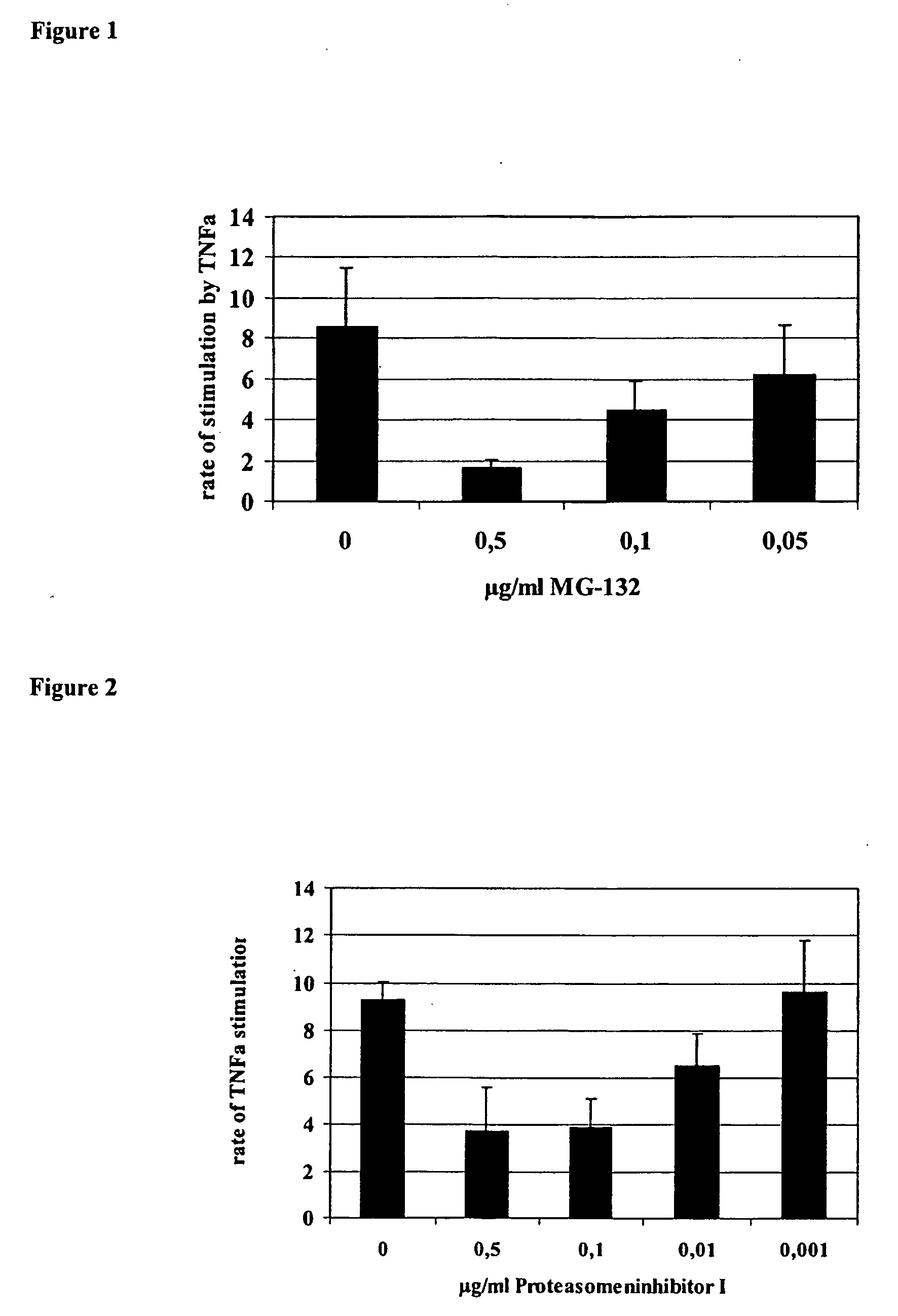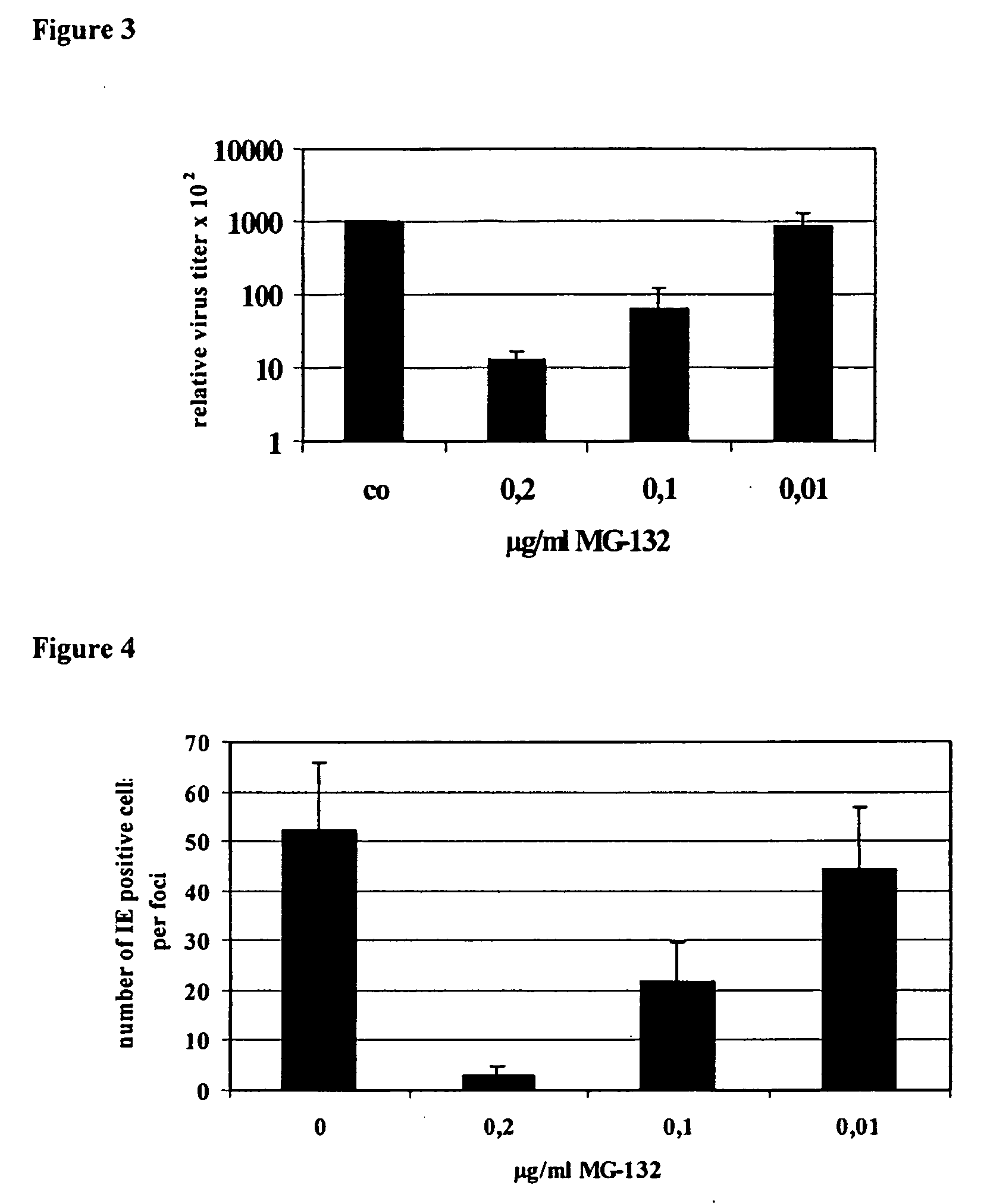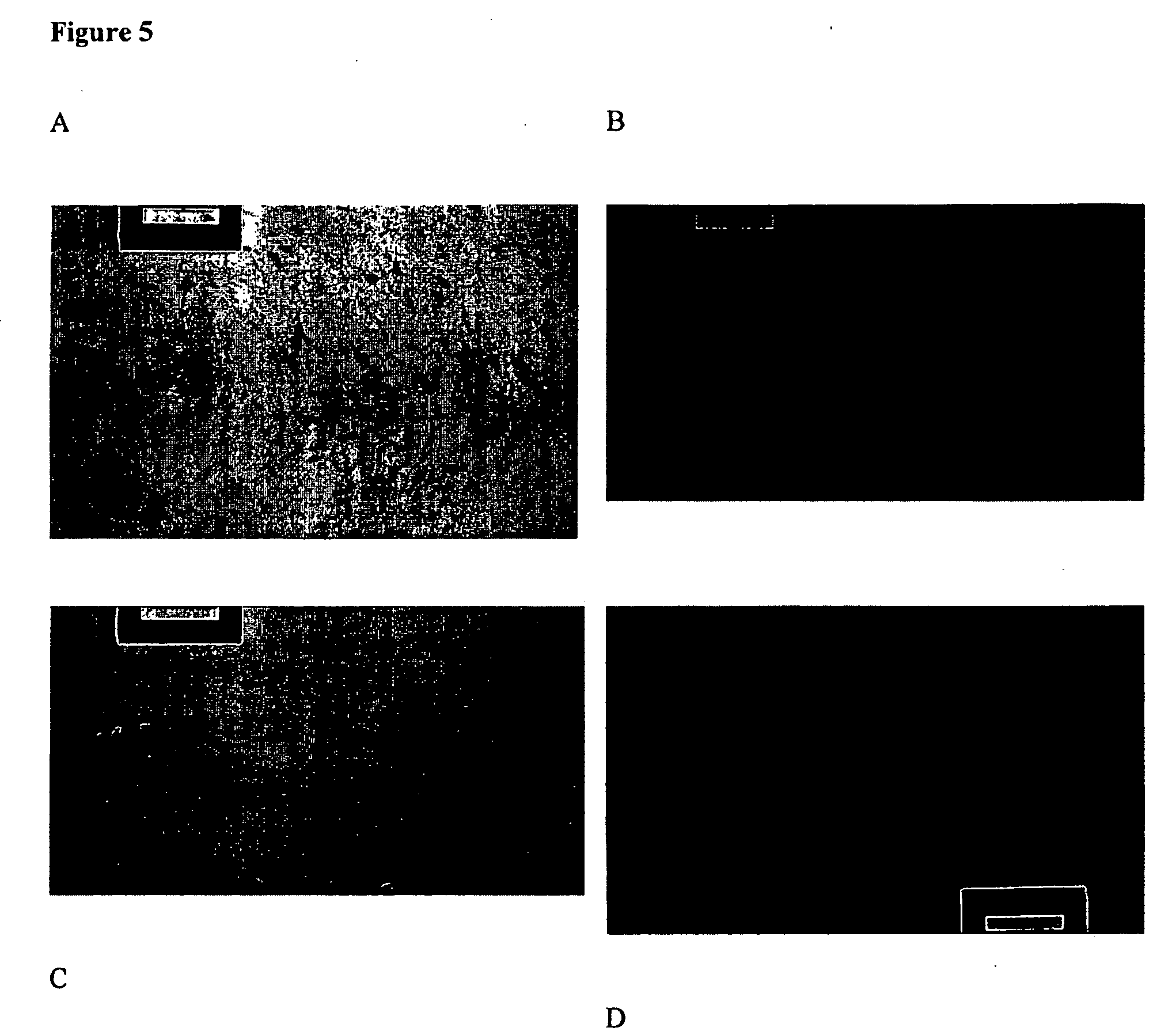Proteaseome inhibitors for the treatment of herpesviridae infected individuals
a technology of herpesvirus and proteaseome, which is applied in the direction of drug compositions, peptide sources, peptide/protein ingredients, etc., can solve the problems of perinatal infection being symptomatic or even ending in death, perinatal infection being symptomatic or even symptomatic, and symptomatic presentation
- Summary
- Abstract
- Description
- Claims
- Application Information
AI Technical Summary
Benefits of technology
Problems solved by technology
Method used
Image
Examples
example 1
Influence of Proteasome Inhibitor MG-132 on TNFα Stimulation of the HCMV IE1 / 2 Enhancer / Promoter in HL-60 Cells
[0095] As a model for undifferentiated monocyte / granulocyte progenitor cells HL-60, cells (ATCC No. CCL 240) expressing high levels of CD34+ but low levels of typical differentiation antigens like CD11a-c and CD14 on their surface were used. Furthermore, HL-60 cells have retained the ability, to differentiate into granulocytes and monocytes depending on the stimulus. HL-60 cells were grown in RPMI 1640 medium supplemented with 10% fetal calf serum (both certified endotoxin-free, Biochrome, Germany) at 37° C. in a 5% humidified atmosphere. The cells were shown to be mycoplasma-free by the Mycoplasma Detection Kit (Boehringer Mannheim, Germany). The cells were grown up to 1×106 cells per ml. HL-60 cells were transiently transfected with the plasmid pRR55 containing the native HCMV strain Ad169 IE1 / 2 enhancer / promoter region between nucleotides −671 and +52 relative to the tr...
example 2
Effect of Proteasome Inhibitor PS-1 on TNFα Stimulation of the HCMV IE1 / 2 Enhancer / Promoter in HL-60 Cells
[0097] Under the same experimental conditions proteasome inhibitor 1 (PS-1, Calbiochemie, Germany) and PS-2 were tested for its influence on TNFα stimulation of the IE / 1 / 2 enhancer / promoter of HCMV AD169 and found to reduce TNFα stimulation in a concentration-dependent manner. The results for PS-1 are summarised in FIG. 2.
examples 3-6
Effect of Proteasome Inhibitors MG-132 and PS-1 on HCMV Replication in Human Embryonal Lung Fibroblasts (Fi 301)
[0098] Human embryonal lung fibroblasts (HELF), one of the target cells of HCMV in vivo, are fully permissive for HCMV replication in vitro. For infection experiments the laboratory adapted strain AD169 was propagated on HELFs. Virus stocks prepared from the overlay of infected cells showing 100% cytopathic effect (CPE) by ultra centrifugation were stored in liquid N2. Confluent HELF monolayer in 50 cm2 flasks were infected with AD169 at a multiplicity of infection (M.O.I.) of 0.01. Adsorption of the virus was allowed for 1 hour at 37° C. After that the monolayer was overlayed with MEM containing 4.5% FCS. Medium was free of or substituted with the proteasome inhibitor at the indicated concentration. Virus cultures were cultivated for 5 days without changing the medium. On day five p.i. virus replication, was quantified by the number of CPE visible in inverse light micros...
PUM
| Property | Measurement | Unit |
|---|---|---|
| pH | aaaaa | aaaaa |
| pH | aaaaa | aaaaa |
| pH | aaaaa | aaaaa |
Abstract
Description
Claims
Application Information
 Login to View More
Login to View More - R&D
- Intellectual Property
- Life Sciences
- Materials
- Tech Scout
- Unparalleled Data Quality
- Higher Quality Content
- 60% Fewer Hallucinations
Browse by: Latest US Patents, China's latest patents, Technical Efficacy Thesaurus, Application Domain, Technology Topic, Popular Technical Reports.
© 2025 PatSnap. All rights reserved.Legal|Privacy policy|Modern Slavery Act Transparency Statement|Sitemap|About US| Contact US: help@patsnap.com



